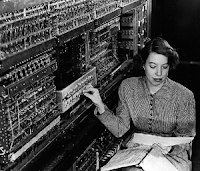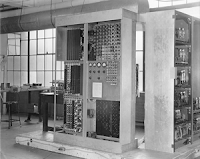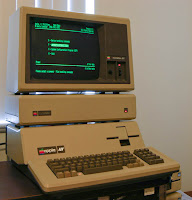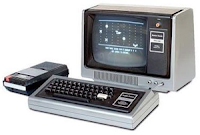Definition Computer
The term computer has a broad meaning and different for everyone. The term computer (computer) is taken from the Latin word meaning computare count (to compute or to reckon).
Charles Babbage was a British mathematician nation. He invented a calculating machine called a difference engine in 1822. The engine is used to calculate mathematical tables. in 1833, Charles Babbage's difference engine develops again called analytical engine that can perform any calculations. So this machine is known as General Purpose Digital Computer. Beliaupun considered the father of modern computer because a very large contribution to the world.
In 1937, Prof Howard Aikem, a mathematician from Harvard University. He designing penbuatan a computer capable of performing arithmetic and logic operations automatically. In 1944, Prof Howard Aikem collaboration with companies IBM completed electronically kompute named "Harvard MARK I, Controlle Automatic Sequence Calculator (ASCC). In the development of the computer is divided into several genarasi, according to ability (capability), cost (efficiency), and the use yan (user frendly).
According Blissmer (1985), the computer is an electronic device that is capable of performing several tasks, which accept input, process the input according to the instructions given, keep the commandments and its products, and provides output in the form of information.
Meanwhile, according to Sanders (1985), the computer is an electronic system to manipulate data quickly and accurately as well as designed and organized in order to automatically receive and store input data, processes it, and produces output based on the instructions that have been stored in the memory. And many more experts who try to define it differently on the computer. However, in essence, it can be concluded that the computer is an electronic device that can accept input, process the input, provide information, using a program stored in the computer's memory, it can store the programs and the results of processing, and works automatically.
From the definition, there are three important terms, the input (data), data processing, and information (output). Data processing by using a computer known as electronic data processing (EDP) or elecronic the data processing (EDP). Data is a collection of events raised from the fact (fact), can be numbers, letters, special symbols, or a combination of all three. The data still can not tell you much that needs to be processed further. Data processing is a process of manipulation of data into a form that is more useful and more means, namely in the form of an information. Thus, information is the result of a data processing activities that provide a more meaningful form of a fact. Therefore, electronic data processing is a process of manipulation of data into a form that is more meaningful in the form of an information by using an electronic device, namely computer.
Computer system
So that the computer can be used to process the data, it must be in the form of a system called the computer system. In general, the system consists of elements that are interconnected to form a single unit to carry out a fundamental purpose of the system. The main objective of the computer system is processing the data to produce information that needs to be supported by elements composed of hardware (hardware), software (software), and brain-ware. The hardware is the computer equipment itself, the software is a program that contains the commands to perform a particular process, and the human brain ware is engaged in operate and regulate the computer system. The third element of the computer system to be interconnected and form a unity. Hardware without software is not going to mean anything, just a inanimate object. Both hardware and software can not function if there is no human being who operate it.
Computer developments:
 The first-generation computers
The first-generation computersGeneration 1: in the year 1946-1956, this generation relied space vacuum tube (vacuum tube). This computer needs space, known for its low-ability and heat power. Storage size is only about +/- 2000 bytes and to run programs and printing is still done manually.

Generation 2: in the year 1957-1963. The transistor replaced the vacuum tube position in storing and processing information. Transistors form the smaller, not so hot and mengkomsusikan little power. Berkapasistas storage size of 32 kb at 20,000-30,000 speed commands per second.

Generation 3: in the year 1964-1975. Itergrated circuit (IC) has begun to be used on the computer. Size 2 megabytes of storage capacity with a speed of +/- 5 million per second. This also introduces generation software technology that is easy to use.

Generation 4: 1980-present. Computers have been using the technology of "Very Large-Scale Integrated Circuits (VLSIC). In a chip, this technology is able to accommodate millions circuit. This chip is called the microprocessor. Storage size has a large capacity with the speed of millions of instructions per second.
Thank you for reading and hopefully useful for all of us ..


.png)
 By
By  2:44 AM
2:44 AM












0 comments